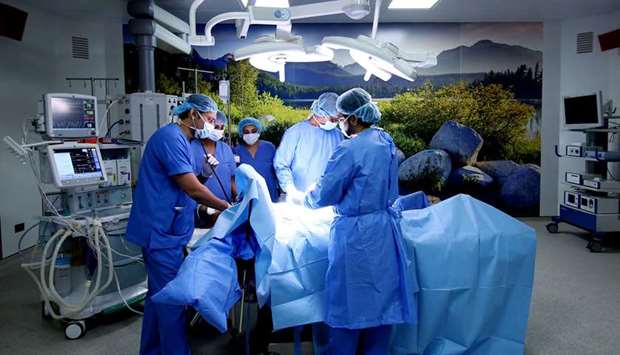In the past few decades, there have been significant changes in how gynaecological surgeries are done. The advances in knowledge and technology have combined and revolutionised the surgical approaches, which has benefited our women population significantly. On average, 1 in 3 women see a gynaecologist every year, and about 1 in 10 of these women may need surgical treatment.
Why do women see a gynaecologist?
The common problems that women see a gynaecologist are menstrual problems such as heavy periods. There are multiple causes for this condition; it is advisable to see a gynaecologist if a woman has heavy periods irrespective of their age. Painful periods and lower abdominal pain can sometimes be due to conditions such as endometriosis which affects about 1 in 10 women and can also cause problems to conceive a pregnancy. There are other conditions such as ovarian cysts and fibroids for which women usually see a gynaecologist. All these conditions may require surgical treatment for the resolution of their problem.
What has minimal invasive surgery changed?
Previous surgeries were done as open surgeries, resulting in a significant number of days in a hospital. All these surgeries had their risks with increased blood loss, infections and left the women with a large scar on their belly. However, the advent of the camera has revolutionised surgeries. Nowadays, most gynaecological surgeries are done with minimal access, which means a small incision on the abdomen and with a telescopic camera, the gynaecologist gets a much better view of the inside of a woman to perform high-definition surgeries. These minimally invasive procedures have numerous benefits such as shorter length of stay, less risk of infection and cosmetically, women are delighted not to have a big scar on their belly.
Which conditions are done currently using the advanced techniques?
These advanced techniques have replaced the majority of surgeries. Nowadays, predominantly all hysterectomies are done by a minimally invasive approach unless there are other reasons, such as cancer or specific condition, which means only a few women may need open surgeries. This novel approach allows the diagnosis of women’s health conditions. It provides treatment solutions for many conditions such as endometriosis, ovarian cysts, fertility problems, fibroids, etc.
The telescopic camera approach through natural orifice means no scars at all. There are many hysteroscopic procedures “that means a telescopic camera to access the inside of a woman’s uterus,” facilitating swift diagnosis and treatments. Currently, many menstrual problems such as polyp and fibroids are corrected by this approach.
Can any of these newer surgical techniques be done without anaesthesia?
There are selected conditions that will allow women to avoid anaesthesia, such as vaginoscopy and hysteroscopy. However, it is preferably to be assessed by a gynaecologist to understand the feasibility to sustain such procedures without anaesthesia. These are called office procedures and are also available locally in the country.
How do I know that I will need gynaecology surgery?
It is advisable to consult with your gynaecologist and understand the local availability of local expertise in minimally invasive surgery. You need to consult with a minimally invasive gynaecology expert to understand the best solutions for your gynaecological problems. Each woman needs a specialised personalised consultation to understand their tailor need solutions. The talk should help you understand your situation, relieve your anxiety, and have a positive aim to get back to a normal quality of life.
* The author is a Consultant and Head of the Department Obstetrics and Gynecology at Aster Hospital.

One of the advanced operation theatre in Aster Hospital.


